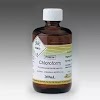Alkali - Definition, Properties and Uses
What is Alkali ?
Alkalis are all Arrhenius bases, ones which form hydroxide ions (OH−) when dissolved in water.
An alkali is a basic, ionic salt of an alkali metal or an alkaline earth metal. A solution of a soluble base has a pH greater than 7.0.
The word "alkali" is derived from Arabic al qalīy / quali (or alkali), meaning the calcined ashes (from the ashes), referring to the original source of alkaline substances.
" All alkali are base but all base are not a alkali. "
Properties of Alkali
Physical Properties
1.An alkali have a bitter taste.
2.Alkaline solutions are slippery or soapy when to the touch, due to the saponification of the fatty substances on the surface of the skin.5.pH of alkali are greater than 7.( Let may start from 7.1) on pH scale
6.On the universal indicator colour changes to blue or purple.
7.It turns red litmus paper to blue.
Chemical Properties
Alkali involves neutalisation reaction and precipitation of metal hydroxide.It also react with ammonia salts and Metals.They explained in below:
1.Neutralisation Reaction
An alkali reacts with acid to form salt and water this is also known as neutralisation reaction.Examples of Neutralisation reactions are
NaOH(aq)+ HCl (aq) → NaCl (aq)+ H2O(l)
NaoH(aq)+H2SO4(aq)→Na2SO4(aq)+2H2O(l)
2.Reaction With Ammonia Salts
3.Precipitation of Metal Hydroxides
Solutions of alkalis are used to precipitate the insoluble metal hydroxides from solutions of their salts.
Example of such a reaction:
Aqueous sodium hydroxide (NaoH) and aqueous copper(II) sulphate
or:
A blue precipitate of copper(II) hydroxide [ Cu(OH)2 ] is produced.
Aqueous sodium hydroxide and aqueous magnesium chloride
or:
A white precipate of magnesium hydroxide [ Mg(OH)2 ] is produced.
4.Reaction with metals
Alkalis usually do not reacts with metals.
Strong alkalis such as sodium hydroxide react with aluminium to give hydrogen gas.
2Al(s)+6NaOH(aq)+6H2O(l)→2Na3Al(OH)6(s)+3H2(g)
Uses of Alkali
1.Caustic soda (i.e, Sodium hydroxide) is used for the preparation of Soap.
2.Caustic potash (i.e, Potassium hydroxide) is used for the manufacture of soft soap.
3.Borax is used for the preparation of Cold cream. Due to Borax is responsible for whiteness of Cold cream.
4.Calcium hydroxide used to neutralize the acidic soil.
5.Sodium Bicarbonate is used for the treatment of acidosis as an alkaliser.







0 Comments